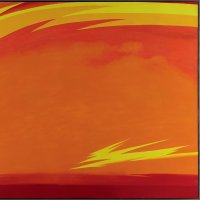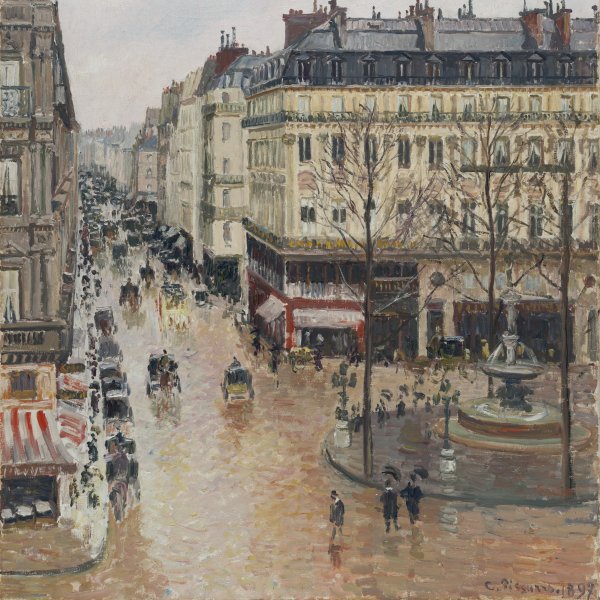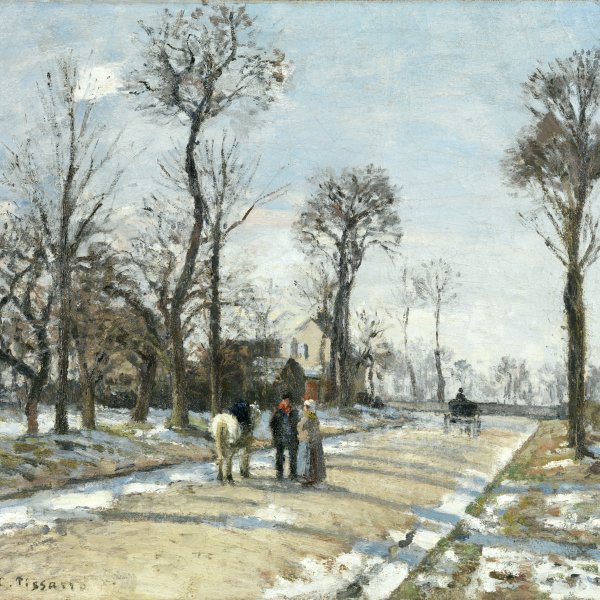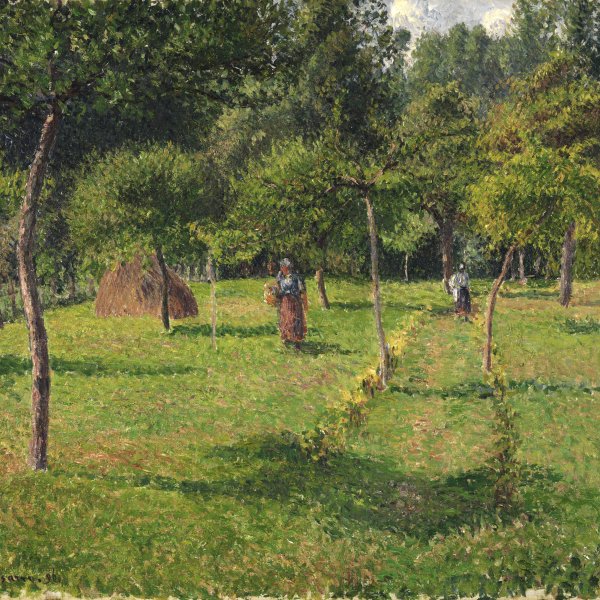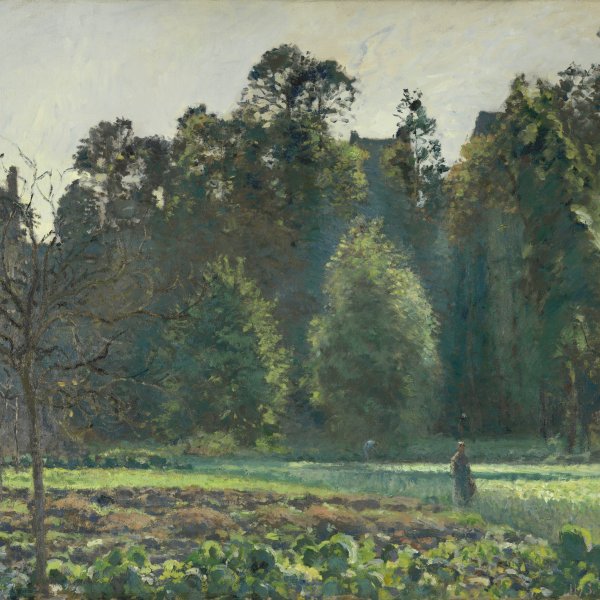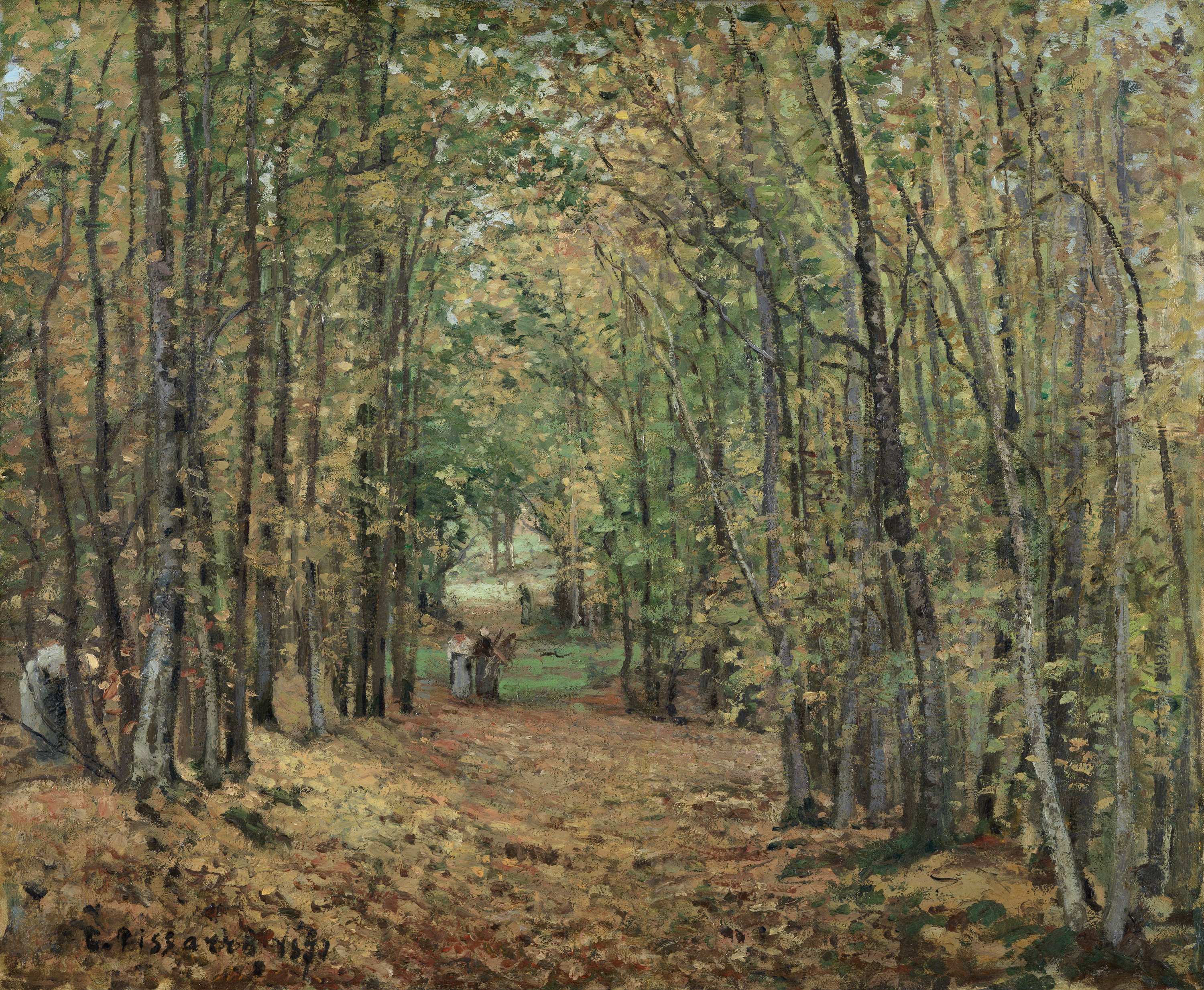The Woods at Marly
1871
Oil on canvas.
45 x 55 cm
Museo Nacional Thyssen-Bornemisza, Madrid
Inv. no.
711
(1970.24
)
Not exhibited
Level 2
Permanent Collection
Level 1
Permanent Collection
Level 0
Carmen Thyssen Collection and Temporary exhibition rooms
Level -1
Temporary exhibition rooms, Conference room and EducaThyssen workshop
In June 1871 Camille Pissarro and Claude Monet returned to France from England, where they had taken refuge during the Franco-Prussian war. After settling again in Louveciennes, a picturesque town on the banks of the Seine not far from Port-Marly, where he had rented part of an eighteenth-century house in 1869, Pissarro continued to paint the effects of light on the surrounding paths and forests. Being forced to move away from the subject matter of his paintings had been highly traumatic for this great master of landscape art and his dismay was further exacerbated by the fact that his house had been sacked by German troops and many of his paintings destroyed during his absence. On returning he went back to Louveciennes to paint many of the rural scenes of the previous years, as taught by the Barbizon painters.
Pissarro, who very soon became a major promoter of the Impressionist exhibitions and took part in all of them, remained faithful to the new language for practically his entire life. This early painting of The Woods at Marly, dated 1871, shows a path in the forest of the Château of Marly viewed from Porte du Phare, with Marly-le-Roi in the background and featuring several small figures. It is painted using a technique of light touches of the brush that capture the vibrating light between the leaves of the trees in the same forest that Corot painted a year later.
Paloma Alarcó
Pissarro, who very soon became a major promoter of the Impressionist exhibitions and took part in all of them, remained faithful to the new language for practically his entire life. This early painting of The Woods at Marly, dated 1871, shows a path in the forest of the Château of Marly viewed from Porte du Phare, with Marly-le-Roi in the background and featuring several small figures. It is painted using a technique of light touches of the brush that capture the vibrating light between the leaves of the trees in the same forest that Corot painted a year later.
Paloma Alarcó

